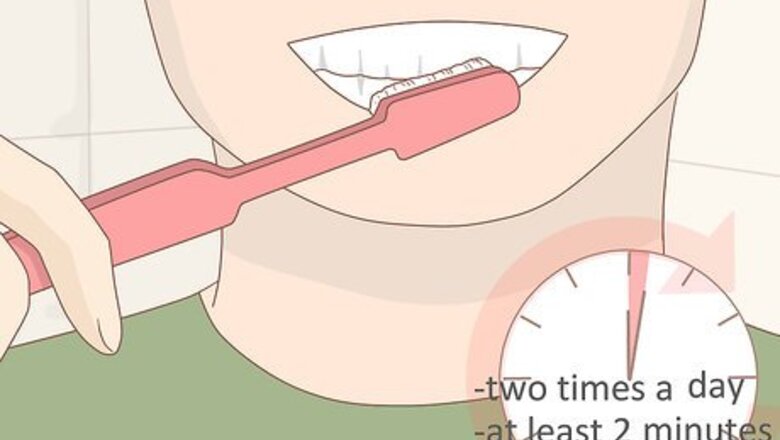
views
X
Trustworthy Source
Mayo Clinic
Educational website from one of the world's leading hospitals
Go to source
[2]
X
Trustworthy Source
National Health Service (UK)
Public healthcare system of the UK
Go to source
Practicing Good Dental Hygiene
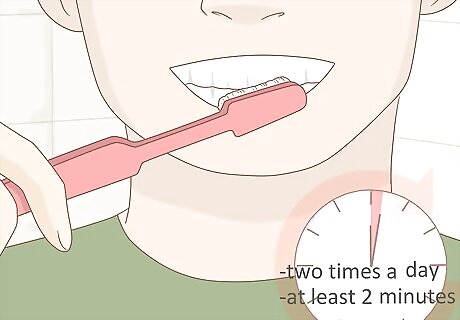
Brush two times a day. Brushing is important and it shouldn't be skipped or rushed. When you brush, do so for at least two minutes. This will give you time to thoroughly clean each tooth. Replace your toothbrush when it gets worn out. After about three months the bristles get permanently bent and they don't clean as well — in fact they get also sharpened and will hurt your gums making bleeding easier. A new toothbrush will keep your teeth clean and sparkling. If you use an electric toothbrush the head should also be replaced every three months. Children should start brushing as soon as they get their baby teeth. Baby teeth are also vulnerable to cavities and the brushing will teach them how to take care of their teeth for when they get their permanent teeth. You can also bring a toothbrush to work or school and give your teeth a quick brush after lunch. This will prevent bits of food from sticking in your teeth and giving you bad breath. But don't brush immediately after eating. Wait a half hour first. The food in your mouth produces acid which softens your enamel making the enamel vulnerable to being worn away.
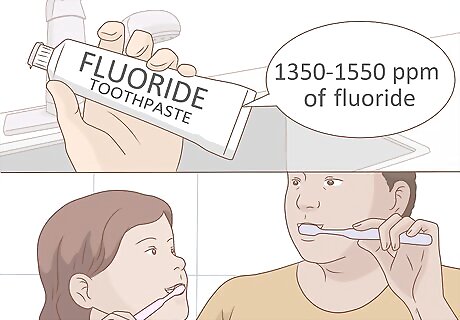
Use a fluoride toothpaste. Fluoride is important because it increases the strength of the enamel on your teeth. This helps protect your teeth from decay. Look for a toothpaste brand that has 1,350–1,500 ppm of fluoride in it. Children can brush with it, but an adult should supervise them to make sure they don't swallow it. Only use a pea-sized amount of toothpaste for children between two and six years old. Children's toothpaste doesn't always contain enough fluoride to be effective in preventing tooth decay. It needs to have at least 1,000 ppm of fluoride. Put a small blob of toothpaste on the brush and then brush it over all surfaces of your teeth. Spit it out afterwards instead of swallowing it.
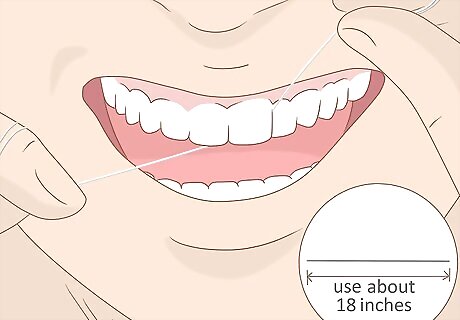
Floss daily. Flossing removes food particles, plaque, and bacteria that build up between your teeth. When you start flossing, your gums may bleed a little bit, but after few days that should stop. It is best to floss before you brush. The floss will then scrape the sides of your teeth clean, making it easier for the fluoride to get in and strengthen the enamel there. Use about 18 inches (46 cm) of floss. Wrap it around one finger on each hand, and then gently slide it between your teeth. Curve the floss around one of the teeth and move the floss up and down along the tooth. Don't press too hard when you go below the gum line. It shouldn't hurt; however, you can expect a slight bleeding which is absolutely normal. This also relieves the micro inflammation created in the papilla Some people find floss to be awkward. If this is the case for you, try using an interdental cleaner. This is a small brush, pick, or stick that lets you get between your teeth without dealing with long strings of floss.
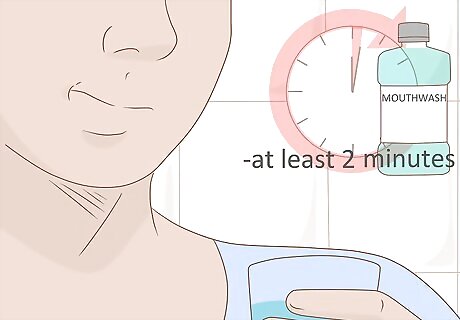
Use mouthwash. Mouthwash can kill bacteria and keep bad breath under control. You can buy different commercially prepared solutions or make a salt solution at home. Swish the mouthwash around in your mouth for at least two minutes. Dissolve about a half a teaspoon of table salt into a cup of water. The salt will dissolve faster if the water is slightly warm and you stir vigorously. Check the ingredients on commercially prepared mouthwashes. Some have antibacterial properties or fluoride in them. The flavors can be strong, so choose one you can tolerate. Even if you use mouthwash, you still need to brush. You can also put mouthwash in a water pick and use that to more thoroughly clean between your teeth.
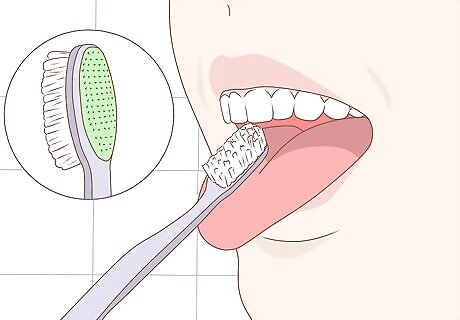
Clean your tongue. You can do this with a tongue scraper. Many toothbrushes have tongue scrapers on the back of them. If you need to, you can even brush your tongue with the bristles of your toothbrush. Cleaning your tongue will remove food particles and bacteria that are on the surface of your tongue. Scrape lightly from back to front along your tongue, being careful not to gag yourself. Rinse your mouth out when you are done. Don't swallow the bacteria that you have scraped off of your tongue.
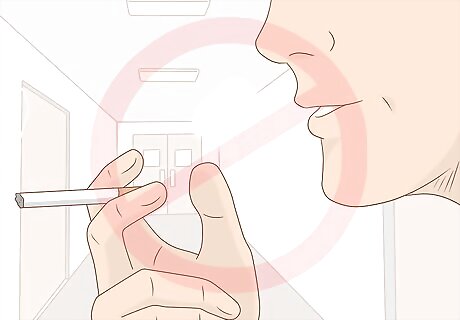
Don't smoke. Smoking increases your risks of mouth cancers, gum disease, and it gives you bad breath and stains your teeth. It can also decrease saliva flow, which allows bacteria to thrive in your mouth. If you already smoke, quitting will improve your oral hygiene tremendously. If you need help quitting there are many resources available including: Hotlines, counseling services, and support groups Medical assistance such as medication, nicotine replacement therapy, and residential treatments
Protecting Your Teeth with a Healthy Diet
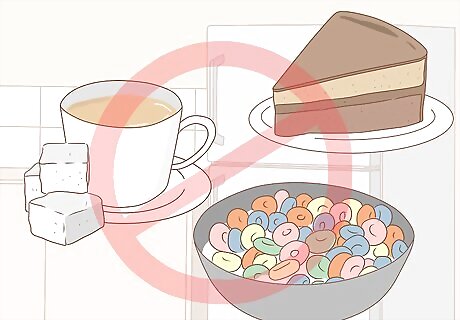
Limit your sugar consumption. As sugar is broken down by your saliva and the bacteria in your mouth, it generates acids. These acids dissolve the enamel on your teeth. You can reduce the damage this causes by eating less sugar. Foods to avoid include: Desserts like candy, pastries, ice cream, cakes, chocolate or sticky sweets Sugary breakfast cereals Sugary tea, coffee, and sodas
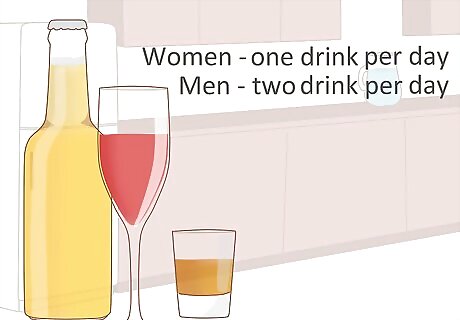
Reduce the amount of alcohol you drink. Alcohol increases your vulnerability to tooth decay by degrading your enamel. If you do drink, do so in moderation. The recommended daily limits are: One drink per day for women and one to two for men. A drink is a beer, a glass of wine, or a shot of hard alcohol.
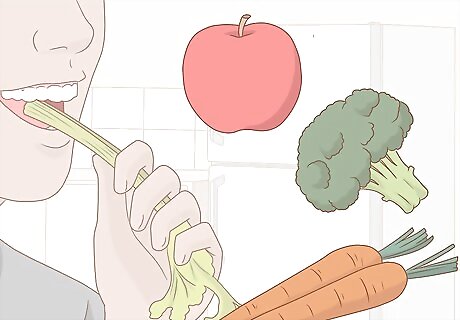
Eat snacks that will clean your teeth. Fresh, crunchy fruits and vegetables are healthy ways to satisfy your hunger. While they can't substitute for brushing, they will help scrape your teeth clean and massage your gums as you eat them. Foods to try include: Apples Broccoli Carrots Celery Peppers Lettuce Cucumbers
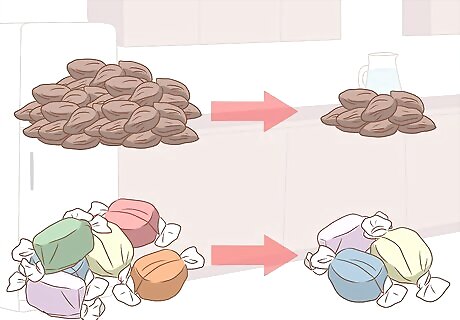
Eat fewer sticky foods. Sticky foods leave sugary residues that cling to your teeth, are difficult to remove from between your teeth, and will make your teeth prone to decay. If you eat these foods, do so in moderation: Raisins, prunes, dried mangos, dried pineapple, and other dried fruits, especially if they are coated in sugar. Taffy, gummy bears, and gooey candy bars Granola bars

Clean your teeth with sugar-free gum. Chewing gum causes you to produce saliva. The saliva will break down and remove food particles that may be left in your teeth. You can purchase sugar-free gum at your local grocery store, convenience store, or pharmacy. If you don't have sugar-free gum, don't chew sugary gum instead. It will coat your teeth with sugar and raise your risk of getting cavities.
Getting Professional Care for Your Teeth
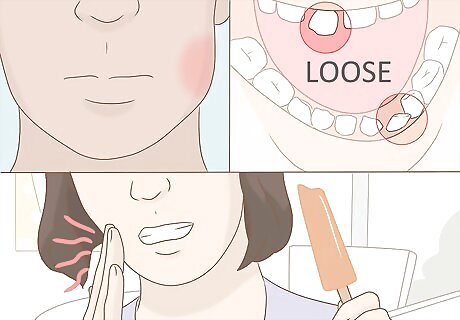
Watch for signs of problems with your teeth. Many problems start out as minor discomfort and then progress to conditions that are more serious and more difficult to address. Schedule a dentist appointment if you have: Pain or swelling in your jaw Loose permanent teeth Gums that hurt, bleed, or are swollen when you brush or floss Gums that are pulling away from your teeth Teeth that are sensitive to hot or cold foods Constant bad breath Pain or discomfort when you bite
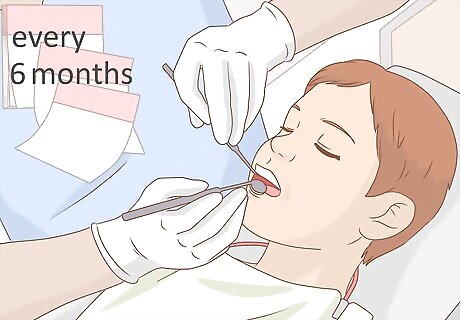
Let the dental hygienist clean your teeth. Make an appointment to go for a check-up and cleaning every six months. Take your child to the dentist as soon as he or she begins getting baby teeth. Your dentist or hygienist will: Show you the best way to brush and floss Scrape away the hard plaques that form in places that are hard to thoroughly clean Examine your gums for gum disease Look for cavities
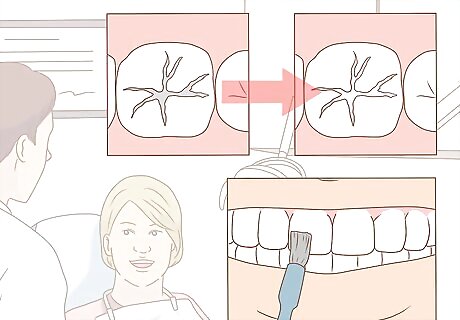
Ask your dentist about fluoride varnish and fissure sealants. These are treatments that protect your teeth over the long-term. They can be given to both children and adults. Fluoride varnish can be given every half year. During this treatment, fluoride is put on the teeth to strengthen the enamel. A fissure sealant is applied about once per decade. It is a thin composite covering that creates a smooth and slippery surface which protects the crevices of your teeth from bacteria and food that could get trapped there.
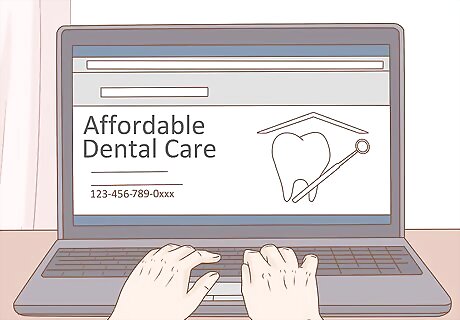
Locate dental care that you can afford. Many people have to pay out of pocket for dental care. Ways to find affordable options include: Calling or searching the websites of the US Health Resources and Services Administration, your county or state health department, or community health center. These places may be able to point you towards local clinics that charge on a sliding-scale based on income. Check with dental hygiene and dentistry schools near you to see if they offer low-cost treatments or free clinic days as a way of drawing patients to give their students experience. It should always be supervised by dentist or hygienist. Look online at the American Dental Association or the American Dental Hygienists Association.














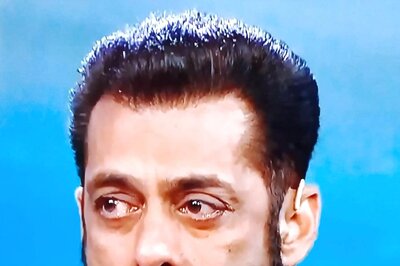




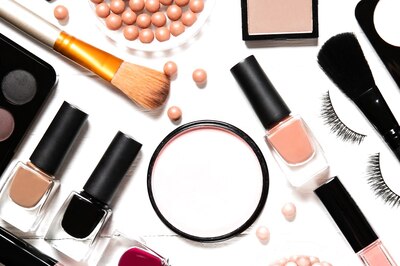
Comments
0 comment